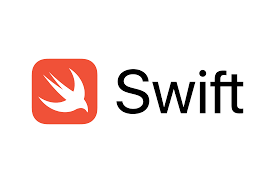
In the fast-paced world of app development, where innovation is key and user experience reigns supreme, the tools and languages developers choose can make all the difference. Among these, Swift stands out as a game-changer, revolutionizing the way developers create applications for iOS and beyond. Launched by Apple in 2014, Swift has rapidly gained popularity for its simplicity, speed, and safety. In this article, we delve into the significance of Swift and explore how it has transformed the landscape of app development.
Evolution of Swift:
Before the advent of Swift, Objective-C was the primary language for iOS app development. While Objective-C was powerful and versatile, it had its drawbacks, including complex syntax and a steep learning curve. Recognizing the need for a modern, developer-friendly language, Apple introduced Swift at its Worldwide Developers Conference (WWDC) in 2014. Swift was designed to be more intuitive, concise, and capable of leveraging modern programming concepts.
The Advantages of Swift:
- Simplicity: One of the most significant advantages of Swift is its simplicity. The language was designed with clarity and ease of use in mind, making it accessible to both novice and experienced developers. Swift’s clean syntax reduces the amount of code required to perform tasks, leading to faster development cycles and fewer errors.
- Safety: Safety is a top priority in Swift. The language incorporates modern features such as optionals, which help developers write safer and more robust code by handling nil values effectively. Additionally, Swift uses automatic memory management, eliminating common pitfalls associated with manual memory management in languages like Objective-C.
- Speed: Swift is built for performance. Apple optimized the language for speed, resulting in faster execution times compared to Objective-C. This speed boost is especially noticeable in tasks like app launch times, rendering graphics, and processing complex algorithms, making Swift ideal for building high-performance applications.
- Interoperability: While Swift was created as a replacement for Objective-C, it maintains interoperability with its predecessor. Developers can easily integrate Swift code into existing Objective-C projects and vice versa, allowing for a smooth transition to the new language without sacrificing compatibility.
- Open Source: In 2015, Apple open-sourced Swift, allowing developers from around the world to contribute to its development. This move not only fostered a vibrant community of Swift enthusiasts but also led to rapid improvements and enhancements to the language. Today, Swift continues to evolve through community-driven initiatives and regular updates from Apple.
Swift Beyond iOS:
While Swift was initially introduced as the go-to language for iOS app development, its influence has extended far beyond the Apple ecosystem. Thanks to its open-source nature and versatility, Swift is now being used to build applications for a wide range of platforms, including macOS, watchOS, and tvOS. Furthermore, Swift’s server-side capabilities have sparked interest in backend development, with frameworks like Vapor and Kitura enabling developers to build robust, scalable web services using Swift.
Swift in Education:
Apple has actively promoted Swift as an educational tool, aiming to inspire the next generation of developers. The company introduced Swift Playgrounds, an app that teaches programming concepts using interactive puzzles and challenges. Swift Playgrounds has become a popular resource in classrooms around the world, helping students of all ages learn to code in a fun and engaging way. Additionally, Apple has partnered with universities and educational institutions to offer curriculum materials and resources for teaching Swift programming.
The Future of Swift:
As Swift continues to evolve, its impact on the world of app development is only expected to grow. With each new release, Apple introduces features and enhancements that further improve the language’s performance, safety, and versatility. Moreover, Swift’s open-source nature ensures that it will remain relevant and adaptable to emerging technologies and industry trends.
In conclusion, Swift has revolutionized the way developers create applications for iOS and beyond. Its simplicity, safety, speed, and versatility have made it the language of choice for millions of developers worldwide. Whether you’re building a mobile app, a web service, or exploring the world of software development, Swift provides the tools and capabilities to bring your ideas to life. As we look to the future, Swift will undoubtedly continue to shape the landscape of app development, empowering developers to innovate and create the next generation of groundbreaking applications.
